In Fruita, Colorado, dinosaurs rule, especially at Dinosaur Journey, a museum devoted to Traveling through this western Colorado town—only half an hour from the Utah border—you’ll see plenty of dino sculptures and signs. This deserts landscape is truly a paleontologist’s dream come true.
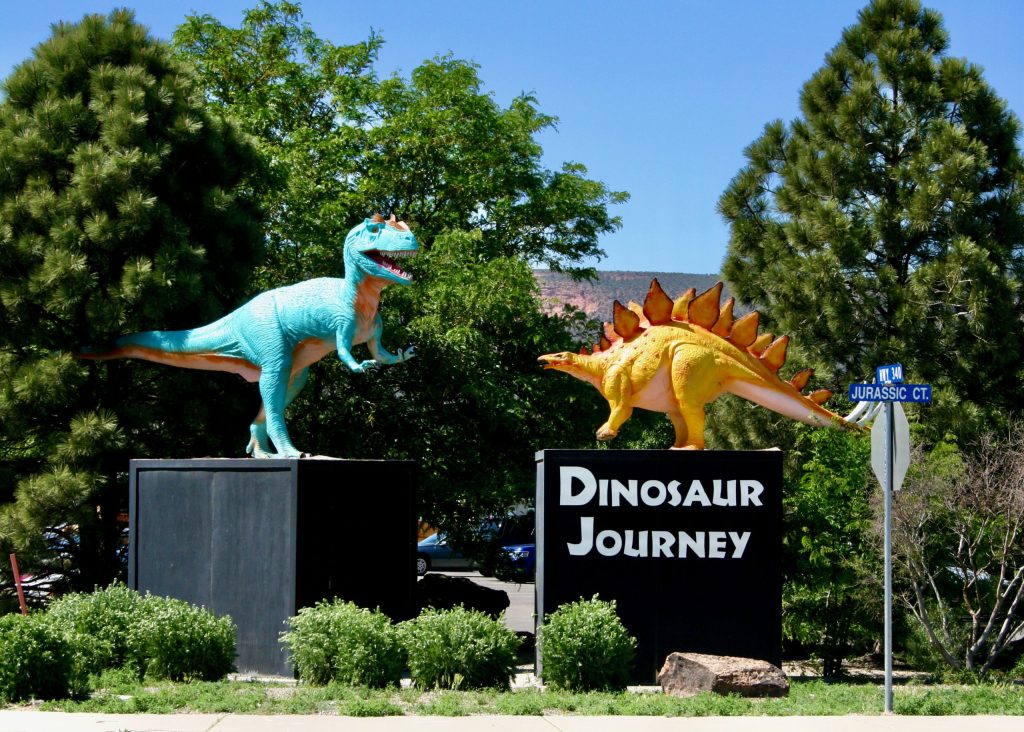
Dinosaur Journey museum is an educational, fun place to explore the dinosaurs of the western United States. ©Laurel Kallenbach
For more than a hundred years, scientists have flocked to this part of the West to search for dinosaurs—and they’re still making new discoveries. Thousands of fossilized dinosaur remains have been unearthed in the region.
The town of Fruita, about 12 miles west of Grand Junction, Colorado, is located along the Dinosaur Diamond Scenic Highway, a 512-mile loop through Colorado and Utah with designated stops at sites famous for dinosaur finds. If you’re a dino lover, you must stop at Fruita’s Dinosaur Journey, a family-oriented museum filled with fossilized skeletons—including toothsome, 27-foot Allosaurus—and robotic recreations of a number of impressive dinosaurs.
In addition to seeing the paleontology lab, where you can learn about how scientists study the fossils they’ve dug up, you get an up-close look at the creatures, including these five:
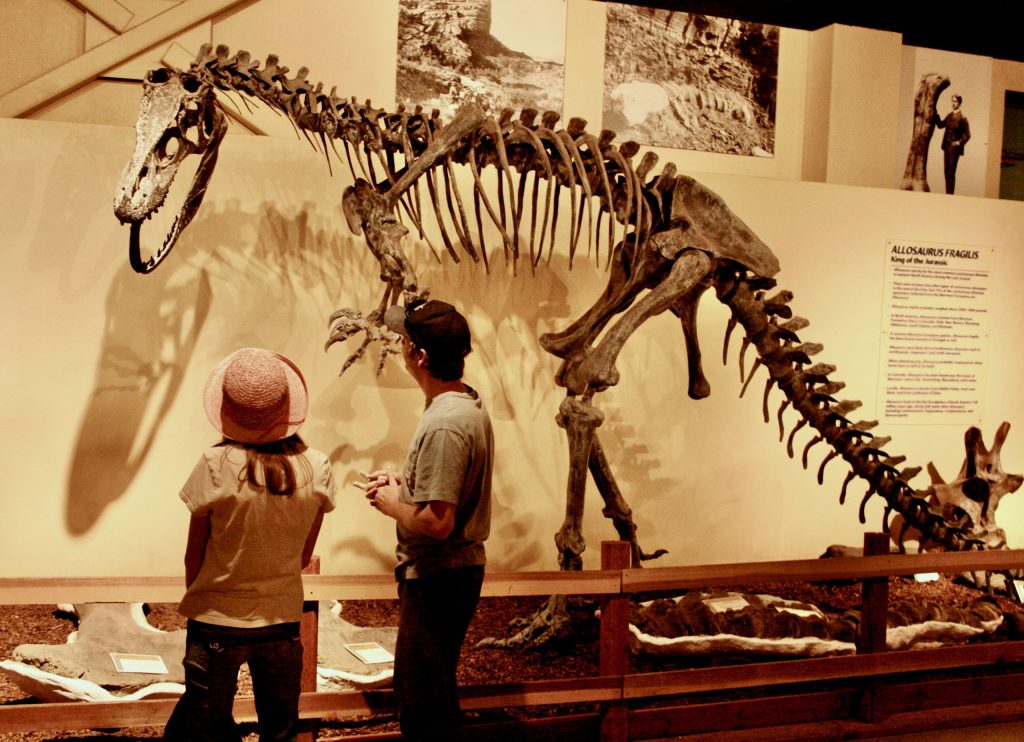
A fossilized skeleton of Allosaurus, nicknamed “King of the Jurassic.” ©Laurel Kallenbach
1. Voracious Allosaurus: A seriously carnivorous dinosaur of the Jurassic, this behemoth used its sharp teeth and hand claws to tear into herbivorous dinosaurs, including Brontosaurus. Numbers of Allosaurus skeletons have been found in Rabbit Valley where I participated in the museum’s Dino Dig; in fact, the girl and her grandfather digging next to me unearthed the fossilized tooth of a juvenile Allosaurus. Gazing at the Allosaurus skeleton at Dinosaur Journey museum is terrifying enough, but imagine the horror of seeing a fully muscled and fleshed animal—who weighed between 2,000 and 3,000 pounds—coming at you!
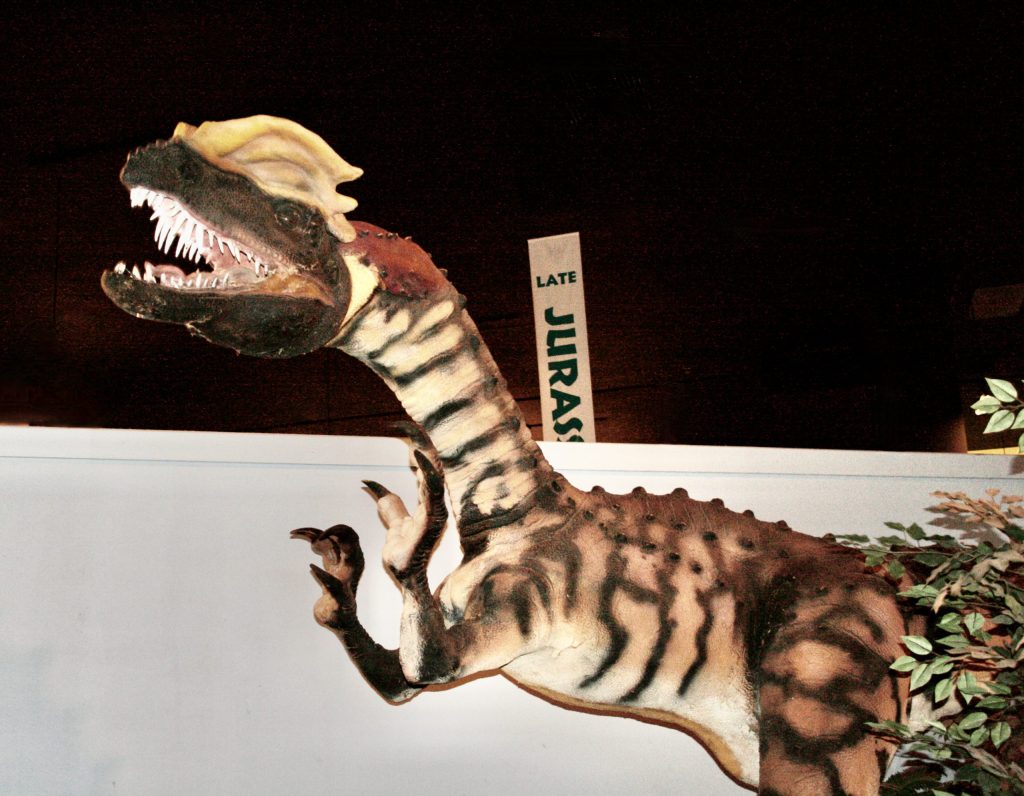
Beware the poisonous Dilophosaurus, who may have been a venom-spitter. Photo ©Laurel Kallenbach
2. Poison-Spitting Dilophosaurus: A dinosaur that will hunt you down and spit poison at you? Yikes! Dinosaur Journey’s animated model of Dilophosaurus rears up and drenches museum-going humanoids with poison. Okay, it’s really just water spewing at you, but it’s a pretty scary demonstration of the talents of these prehistoric carnivores. One note: Scientists aren’t positive that this 20-foot monster with twin crests on its head was actually poisonous; it’s a theory. Either way . . . yuck!
3. Swift Velociraptor: If you’ve seen the movie Jurassic Park, you know that the small, lithe Velociraptor was a formidable hunter because of its speed. There’s just no running away from these track-and-field stars when they’re hungry.
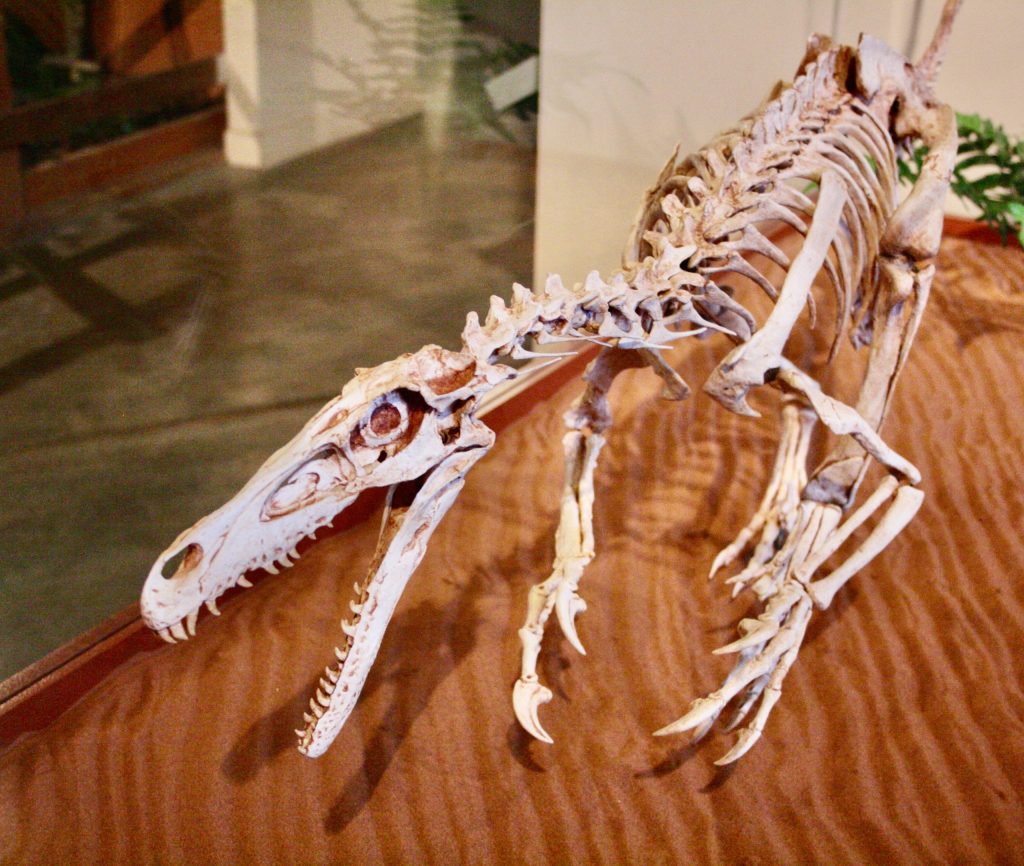
The hungry Velociraptor at Dinosaur Journey ©Laurel Kallenbach
The skeleton on display at Dinosaur Journey looks petite, but you can see rows of razorlike teeth and those creepy, birdlike claws. (Size isn’t everything!) Even the empty eye socket looks terrifying. Imagine this flesh-eater covered in feathers—horror!
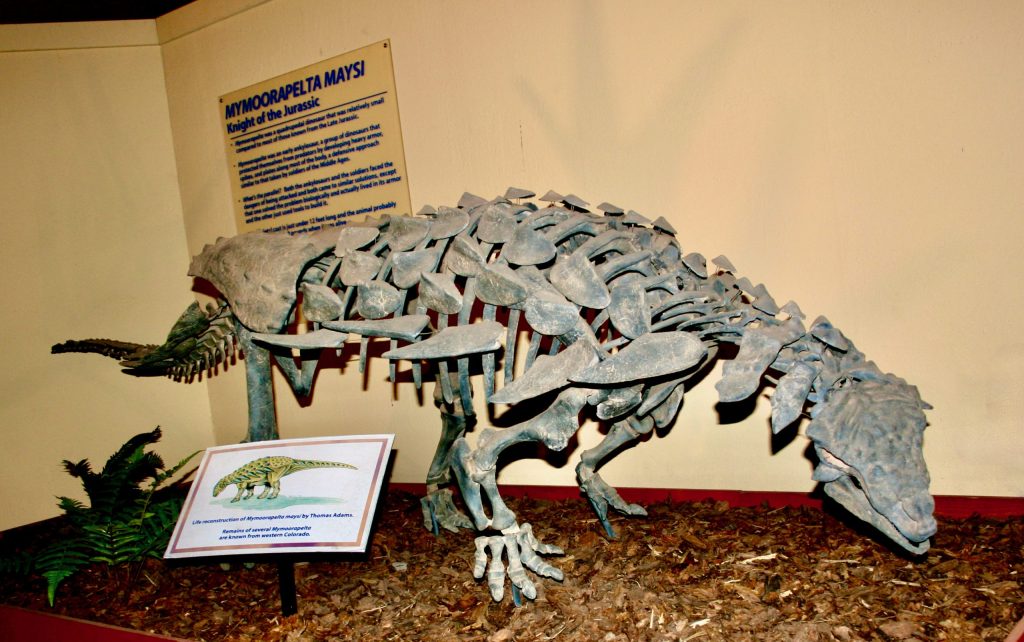
The Mymoorapelta Maysi was covered with bony armor. ©Laurel Kallenbach
4. Armored Mymoorapelta: Covered in bony armor, Mymoorapelta was named after Mygatt-Moore quarry in western Colorado, where it was found. (This is the same quarry where my brother and I dug for fossilsThe same quarry where I dug for fossils!)
Much like an armadillo, this dinosaur was biologically furnished with bony, spiky plates that would have made it tough for predators to kill this slow-moving beastie, who is sometimes dubbed “a living tank” because of its heavy coat of armor. The sign at Dinosaur Journey calls this guy “Knight of the Jurassic.”
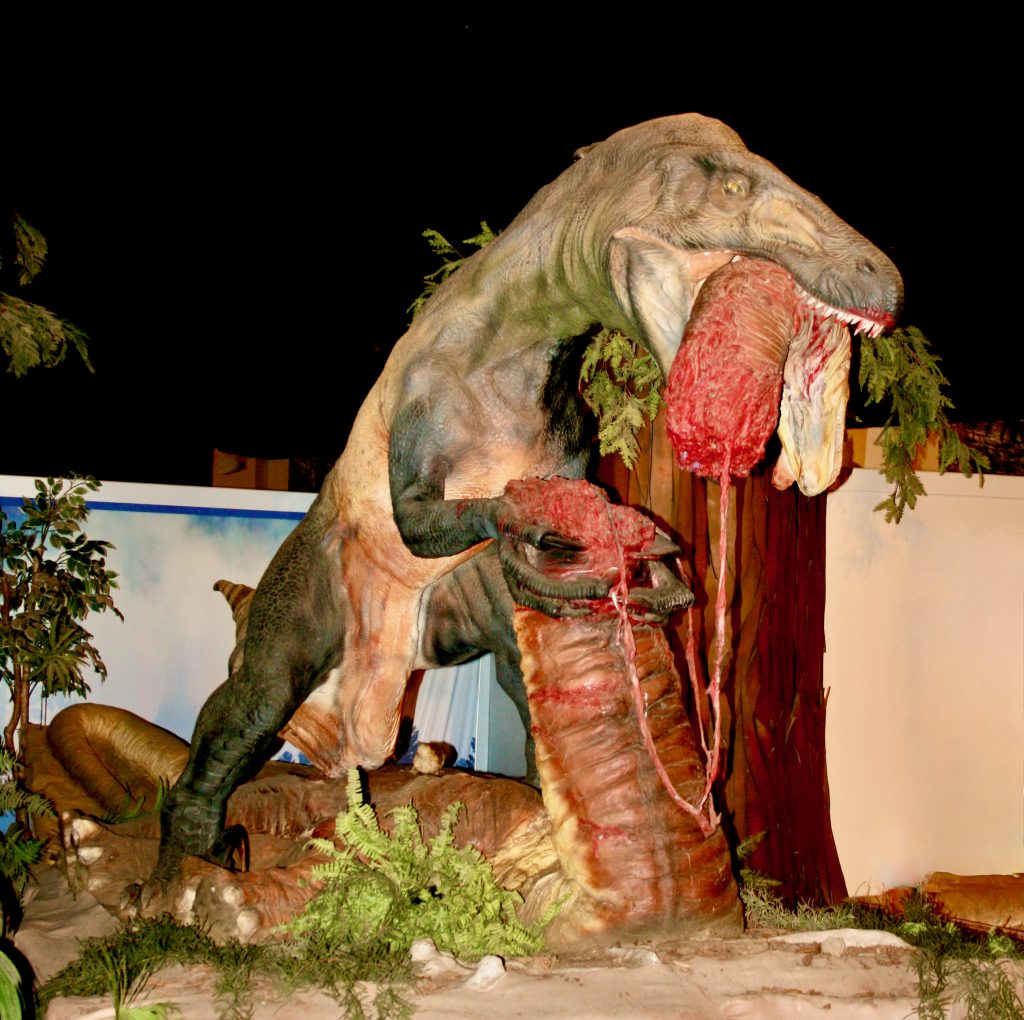
Fossils of he Utahraptor, which lived in the early Cretaceous, were discovered in Yellow Cat, Utah. ©Laurel Kallenbach
5. Utahraptor, the Slasher: This massive hunter was even larger than the fear-inducing Allosaurus and Tyrannosaurus Rex— and just as fierce. Can you guess the state where Utahraptor was discovered?
With formidable, nine-inch-long claws, this uber-predator was the Freddy Krueger of Cretaceous carnivores. Indeed, this depiction of Utahraptor is truly a bloody nightmare—and I’m pretty sure he’s chewing on a vegetarian. Truly chilling!
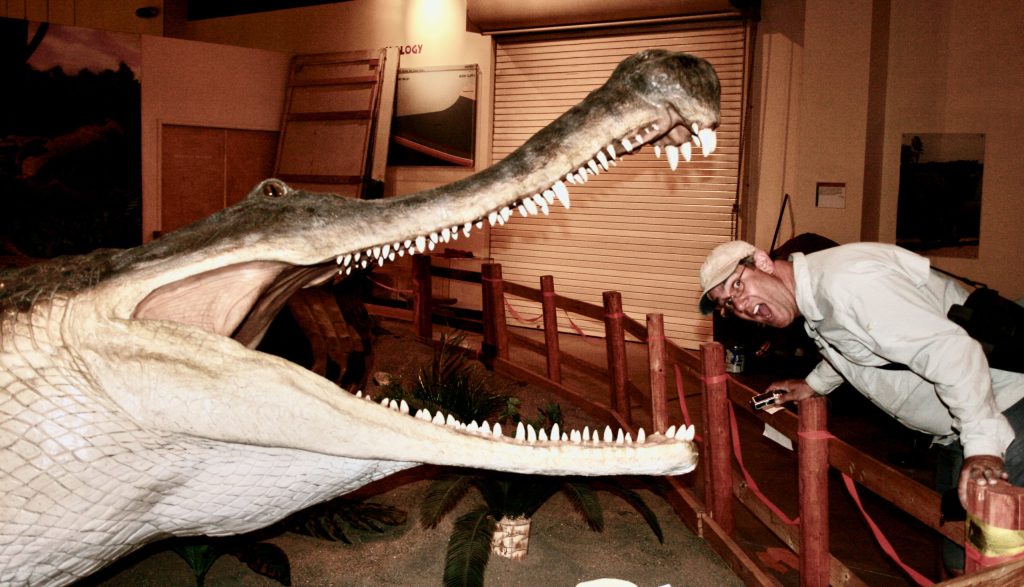
This ravenous Sarcosuchus is about to eat my brother! ©Laurel Kallenbach
Bonus monster: Sarcosuchus: A distant but giant-sized relative of the crocodile, Sarcosuchus lived 112 million years ago. The display of this toothy mega-reptile was visiting during the traveling, temporary “Supercrocs” exhibition, so it’s not permanently at Dinosaur Journey. Good thing, or my brother, David, would never have made it out alive!
Fun Facts You’ll Learn at Dinosaur Journey:
- Stegosaurus is the official state fossil of Colorado.
- The giant sauropod dinosaur Supersaurus—who probably weighed about 92,400 pounds—was collected near the town of Delta, in western Colorado.
- During the Early Jurassic, most of western Colorado was covered in sand dunes, and we find dinosaur footprints in these rocks.
- A young duck-billed dinosaur was found in marine rocks in western Colorado. The animal had been washed out to sea (from what is now Utah) and sank to the bottom.
- Super-sized Apatosaurus (also known as Brontosaurus) was found near Fruita and probably weighed about as much as 150,069 Big Macs.
- A tiny Jurassic dinosaur, Fruitadens —who lived at the same time as Apatosaurus—was smaller than a chicken. Apatosaurus was a million times heavier than Fruitadens. Both were found in western Colorado.
—Laurel Kallenbach, freelance writer and editor
Originally published: August 2014
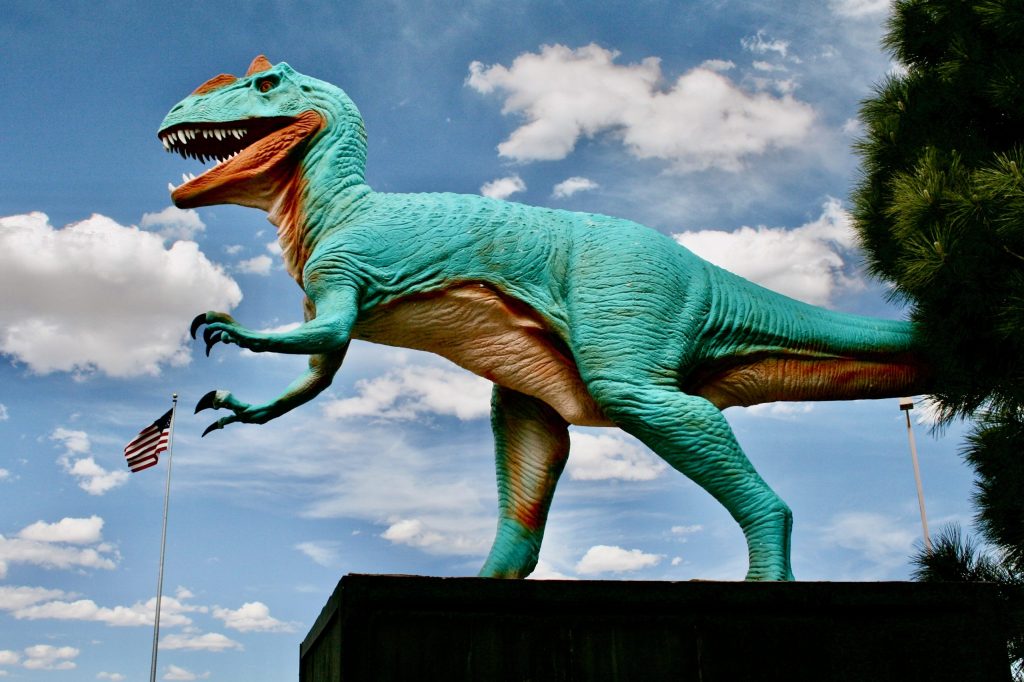
An Allosaurus model at Dinosaur Journey in Fruita, Colorado ©Laurel Kallenbach
Read related articles:


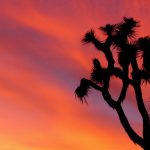
Great read!
For Boulder County locals with little ones (and kids-disguised as adults like Laurel), the WOW! Children’s Museum in Lafayette just opened a new hands-on exhibit of dinosaurs!
Ooh…I wanna go, I wanna go!!